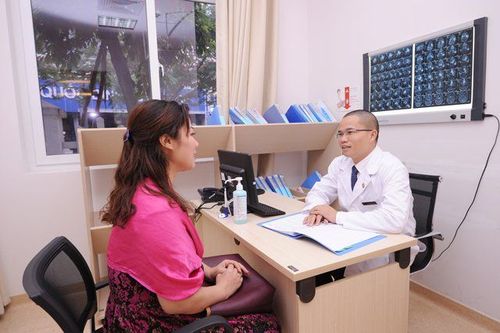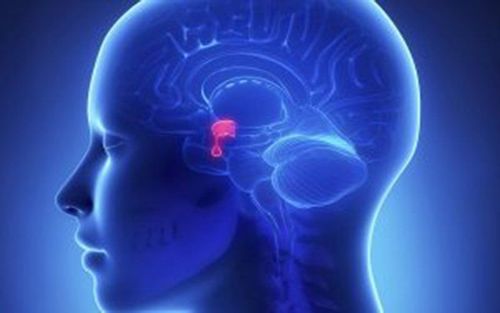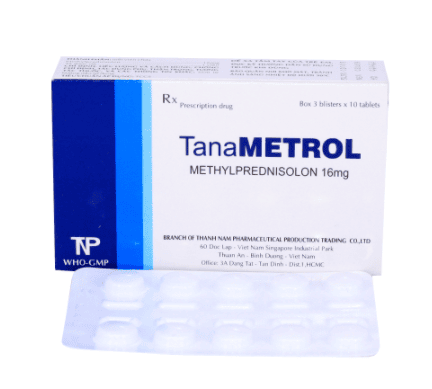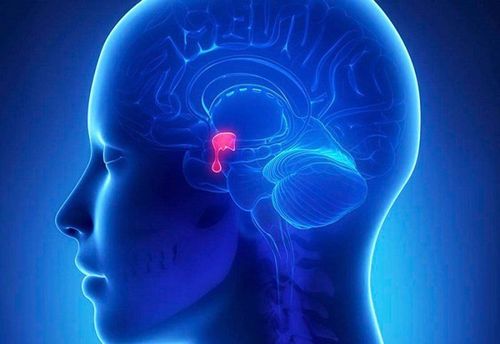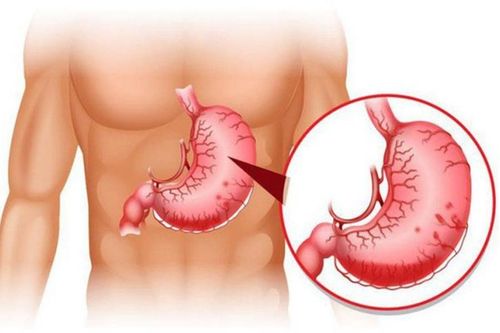This is an automatically translated article.
Laparoscopic pituitary tumor surgery through the sphenoid bone is the most common way today to treat pituitary tumors with indications for surgical intervention. Is surgery dangerous for pituitary adenoma is a question that most patients with pituitary tumors are concerned about.
1. Leakage of cerebrospinal fluid
A pituitary tumor is an epidural tumor that grows outside the restricted area of the cerebrospinal fluid. Even in patients with a large invasive pituitary tumor, the tumor usually does not invade the arachnoid membrane and extends into the subarachnoid space. Therefore, when surgically removing the tumor, the continuity of the arachnoid membrane is broken and a CSF fistula is formed.
This complication can occur intermittently and only with some specific activities of the patient, and depends on the location of the tumor. Pituitary tumors proximal to the base of the pituitary fossa are the most common site where a CSF fistula can develop. In addition, surgery for a large pituitary tumor can also create excess in the arachnoid membrane, causing the arachnoid to herniate and drain cerebrospinal fluid into the nasal cavity.
Furthermore, cerebrospinal fluid fistulas can also form as a result of the integrity of the sphenoid sinus wall. This effect also directly affects the olfactory epithelium of the nasal cavity, causing transient or permanent loss of smell.
Therefore, regardless of the cause of the cerebrospinal fluid leak, this complication also requires early corrective intervention. Not only does the leak affect other organs, but the loss of fluid can reduce the pressure of the cerebrospinal fluid, creating conditions for pneumothorax, encephalitis - meningoencephalitis can occur.
2. Nosebleeds
Failure to perform a thorough vasoconstriction procedure prior to the intervention or the trauma caused during the procedure can damage the delicate blood vessels in this very narrow and constricted surgical field.
The most commonly affected arteries are the capillaries of the nasal mucosa or may include the sphenoid and internal carotid arteries in the intracranial entry. Therefore, when opening the sphenoid sinus, it is important to take great care to preserve the sphenoid artery as well as the related pedicle of the nasal septum. At the same time, this also prevents the complication of CSF leakage later on.

Chảy máu cam có thể xảy ra khi phẫu thuật nội soi u tuyến yên qua đường xương bướm
3. Loss of sight
Vision loss can result from physical trauma to the optic nerve or optic nerve or from direct trauma as well as extreme traction.
This can happen at any stage of laparoscopic transsphenoidal pituitary adenoma, especially when access to the sphenoid sinus is misdirected.
In addition, the force is too strong while the bone structure separating the sinuses from neighboring structures in this position is thin and weak, leading to indirect deformation and compression of the optic nerve, then can lead to ischemic injury and permanent loss of function. However, if the complications of unilateral vision loss related to laparoscopic transsphenoid pituitary adenoma are decompressed in time and high-dose steroids are used, complete vision can still be restored.
On the other hand, uncommon causes of visual loss after pituitary surgery include cerebral vasospasm and traction trauma, especially during repeat revision surgery. Finally, hollow pituitary syndrome with brain subsidence has also been reported as the cause of gradual visual impairment after surgery.
4. Injury to the internal carotid artery
Although studies have shown that the internal carotid artery is 3mm in diameter and 7mm distal to the pituitary gland, it can sometimes protrude through the wall of the cavernous sinus and abut the pituitary gland.
Thus, without careful preparation of preoperative anatomical features, the internal carotid artery is at high risk of injury.
Besides, to rule out potential internal carotid artery injury, at some centers, patients can be followed up with post-operative cerebral angiography. From there, the surgeon can detect early cerebral hemorrhage as well as blockage or narrowing and cause cerebral infarction for timely intervention.
5. New-onset diabetes insipidus
The pituitary stalk has the function of secreting hormones to metabolize water and electrolytes in the body. Therefore, interventions in this region carry a risk of new-onset diabetes insipidus, which is transient in about 4% to 18% of surgeries.
The physiological mechanism of this complication is that pedicle traction or posterior lobe damage directly damages the hypothalamic axons, leading to deficiencies in antidiuretic hormone (ADH) production and secretion. As a result, the patient suffers from intense thirst while the volume of urine excretion is very large. If diabetes insipidus is not detected and corrected, the patient's life can be life-threatening due to dehydration and electrolyte disturbances.
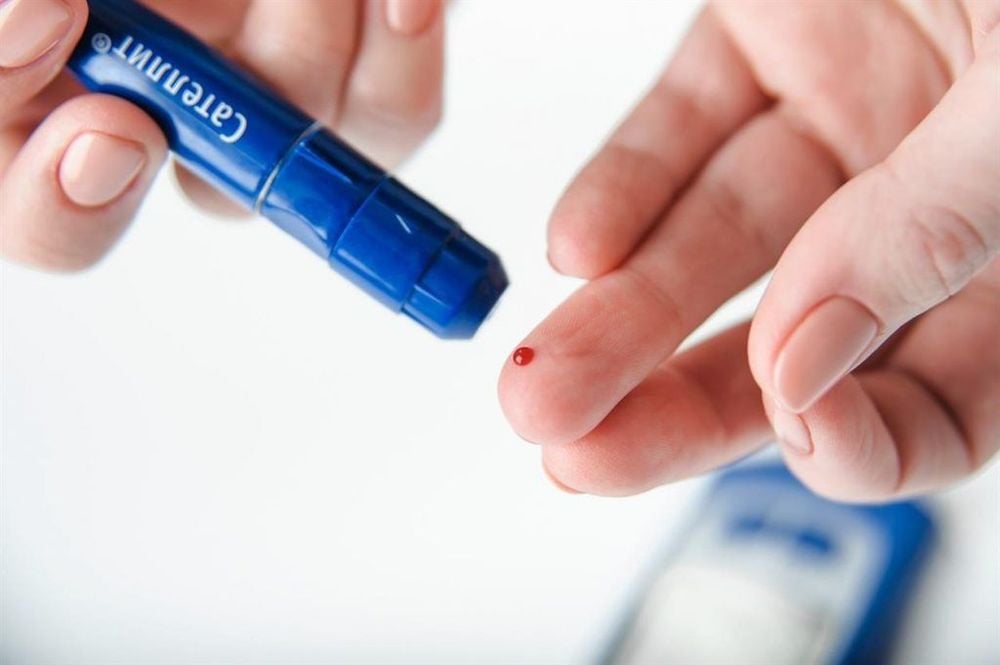
Một trong những biến chứng của phẫu thuật nội soi cắt bỏ u tuyến yên là bệnh đái tháo nhạt
6. Syndrome of inappropriate antidiuretic hormone secretion
The mechanism of this complication is similar to that of new-onset diabetes insipidus when affecting the posterior lobe, pituitary stalk and hypothalamus during laparoscopic transsphenoidal pituitary surgery.
However, in this complication, the secretion of ADH is too high, increasing water retention in the body and hyponatremia. Hyponatremia usually occurs late, appearing around the 7th postoperative day. Depending on the severity of ADH levels, hyponatremia may be asymptomatic or present clinically with impaired consciousness. , the patient is lethargic, has headache, nausea or vomiting when the serum sodium falls below 130 mEq/L.
In contrast to diabetes insipidus, instead of adding hypertonic sodium, the treatment of patients with syndrome Symptoms of inappropriate antidiuretic hormone secretion are essentially water retention.
7. New-onset or worsening hypopituitarism
Preoperative hypopituitarism is due to an adenoma block affecting the hypothalamic-pituitary axis. According to the predicted sequence, the somatotropic axis with growth hormones would be most vulnerable, followed by the gonads with follicle-stimulating hormone and thyroid hormone and finally the adrenal axis with hormones from the adrenal cortex. Depending on the size and growth rate of the adenoma, the hypopituitarism can be partially or permanently reversible and the patient may need to supplement with exogenous hormones. Therefore, under ideal conditions, pituitary tumor surgery is performed with the goal of releasing the compression and restoring pituitary function.
Laparoscopic surgery for pituitary tumors through the sphenoid route still carries the risk of causing new-onset or worsening hypopituitarism due to trauma during manipulation. Therefore, a thorough exploration of the complex anatomical structures in this surgical area is always emphasized before each operation, for each patient with completely unique characteristics.
In summary, the above complications are the noted disadvantages that can be encountered after laparoscopic surgery for pituitary tumors through the sphenoid route. Not only that, the patient may also have other complications related to the surgery like conventional surgical interventions. Therefore, a comprehensive knowledge of pituitary physiology and normal anatomical changes, a thorough preoperative survey of the patient's characteristics, and careful, experienced manipulation are essential. one of the factors contributing to the success of the surgery as well as the safety of the patient.
Customers who have needs of examination and treatment can directly go to Vinmec Health System nationwide or contact for an appointment HERE.
MORE:
Are pituitary tumors dangerous? Symptoms of Pituitary Tumors Pituitary Tumor Surgery
Close-up of prostate cancer treatment with robotic laparoscopic surgery
In April & May 2021, when there is a need for examination and treatment of pituitary tumor at Vinmec Central Park International General Hospital, customers will enjoy double incentives:
- Free specialist examination
- 50% discount for customers with post-examination treatment indications. The program is limited to the corresponding technique of each hospital and to customers who perform this treatment technique for the first time at Vinmec.
Please dial HOTLINE for more information or register for an appointment HERE. Download MyVinmec app to make appointments faster and to manage your bookings easily.




